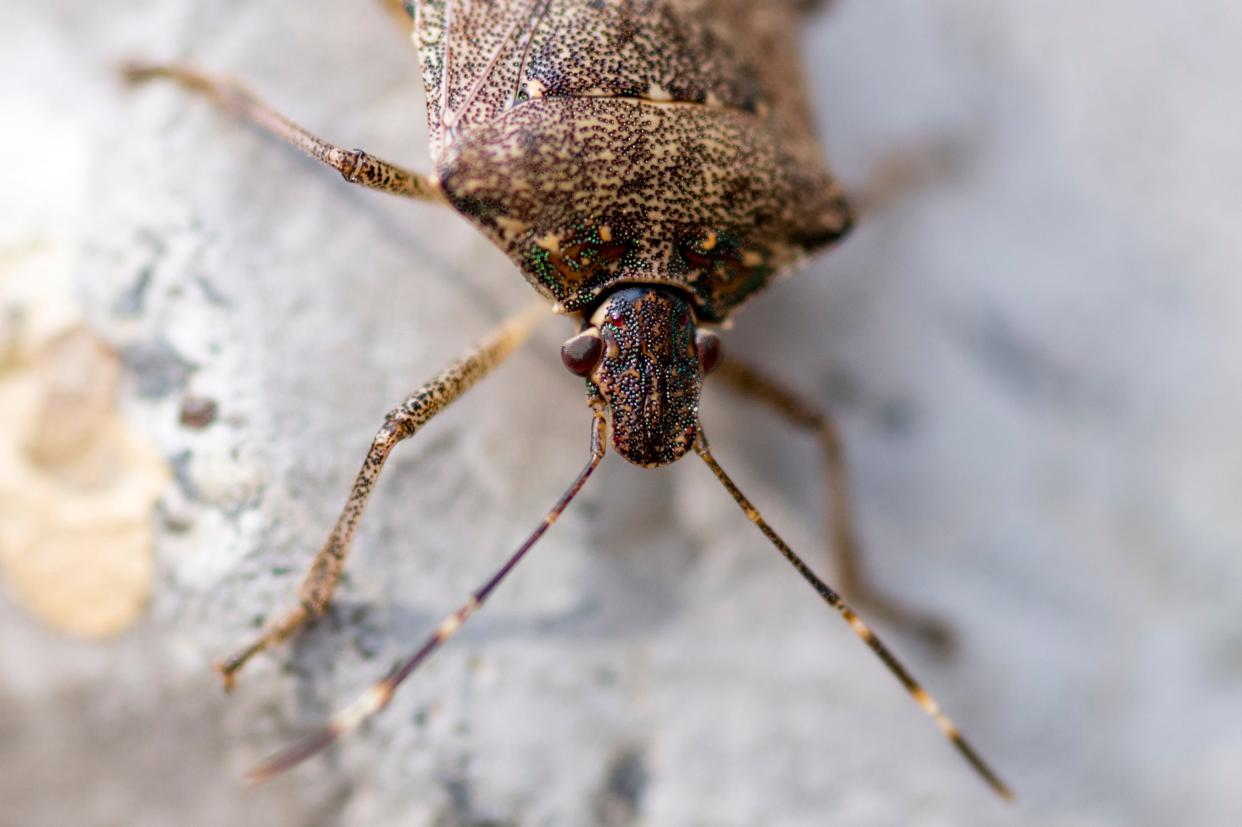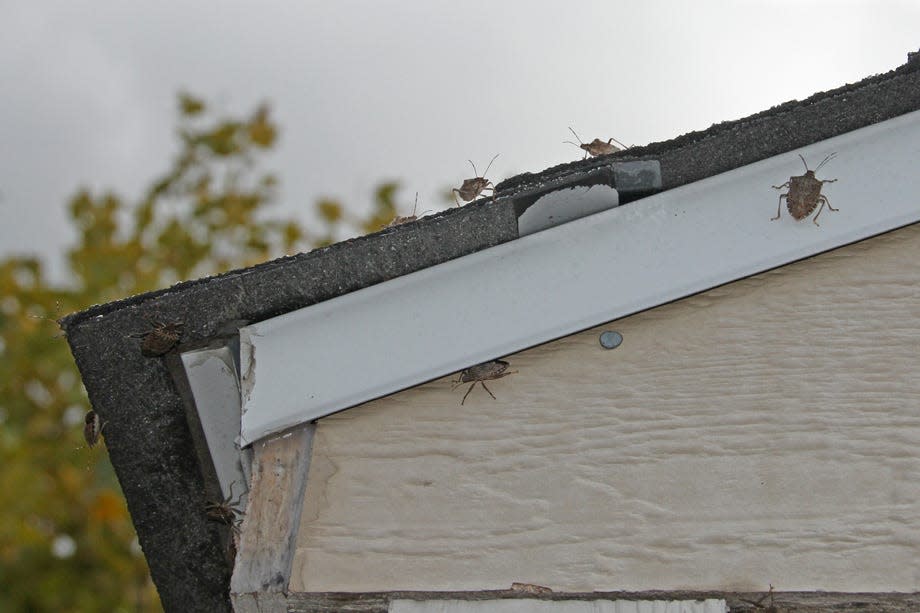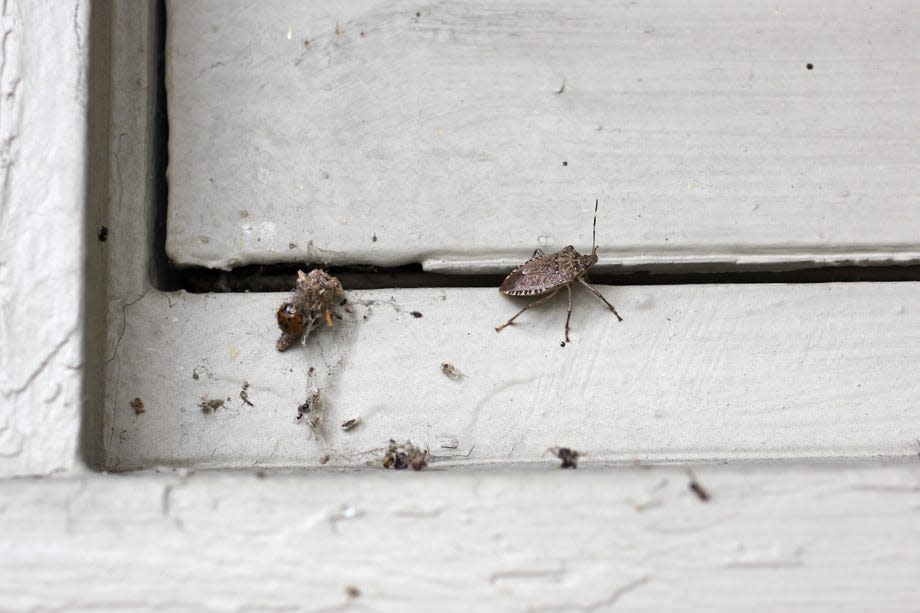Why are stink bugs in my house? How to keep the pest out of your home this time of year

If you have seen a few stinky critters around your home lately, you're not alone.
The fall season is in full swing, which means brown marmorated stink bugs have begun invading homes in search of shelter from cooler temperatures. The invasive species can be identified by its brown and gray shield-like body and lighter underbelly.
Early sightings of the bug were found in Allentown, Pennsylvania, in 1993, but it has since spread to 47 states around the country, including Ohio, Indiana and Kentucky.
If you're seeing stink bugs inside, don't panic. There are simple and effective ways to rid your home of the pests.
Here's everything you need to know about stink bugs this fall.
Why are stink bugs in my house?
The answer is quite simple. Brown marmorated stink bugs often seek shelter inside houses and other buildings during the fall to escape extreme cold. But contrary to popular belief, stink bugs are not seeking heat.
According to Joe Boggs, an entomologist and assistant professor with Ohio State University's Extension, stink bugs seek shelter in locations with moderate, cool temperatures. This helps slow their metabolism during the winter so they don't exhaust their stored fat reserves, which helps keep them alive throughout the season when there is nothing to eat.

This is why you'll likely find stink bugs in attics, exterior wall voids and spaces around door jams and window frames, where they have the greatest chance of survival. Unfortunately, most stink bugs do not stay put and will accidentally find their way indoors, where they burn their fat reserves due to high temperatures and starve to death. That's if a human doesn't get rid of them first.
Are there more stink bugs in Ohio this year?
Cleveland.com reports stink bugs first appeared in Ohio around 2008 or 2009 near Columbus. Populations have since risen due to the area's lack of natural predators.
While stink bugs have become an annual presence in the state now, Boggs said it's hard to predict whether or not home invasions will be high or low in any given year.
"I don't know that populations are any higher this year than last year. However, what will drive them into our homes will all depend on the weather that we experience over these next couple of weeks," Boggs explained.
He said if you see more stink bugs inside, it's likely due to the changing temperatures, not a general increase in the insect population.
"Stink bugs are not going to be at the high level that they were originally years ago in the eastern part of the United States," Boggs said. "Sometimes we can have outbreaks, but we're getting a lot of help from nature to keep the numbers down and then couple that with addressing entry points into a home .... people can rest easier at night."
Are stink bugs harmful?
According to the U.S. Environmental Protection Agency, while large infestations can be a nuisance, they do not bite people or animals, nor do they damage buildings.
Stink bugs, however, can pose a significant threat to fruits, vegetables and other crops, such as apples, corn, peppers, tomatoes and soybeans.
How to keep stink bugs out of your house
The EPA suggests these tips on keeping stink bugs out of your home:
Caulk windows inside and out.
Weatherstrip entry doors and/or install door sweeps if daylight is visible around the door's perimeter.
Rake away debris and edible vegetation from your home's foundation.
Seal foundation cracks.
Secure crawlspace entries.
When insulating exposed plumbing pipes around the foundation or the crawlspace of your home, caulk small gaps and fill larger ones with steel wool.
If your home has a fireplace, cap or screen the top of the chimney to keep out pests.
Contact a pest control professional to treat surrounding vegetation near your home's foundation.
How do I get rid of stink bugs?

When disturbed or squashed, stink bugs release an unpleasant odor from scent glands on their abdomen, the EPA said.
Because of the odor, getting rid of them takes some care. Here are some options:
Capture and release: Stink bugs are attracted to light. Lure them into a jar or bottle, then dispose of them by throwing them outside or by placing them in a sealed container in the trash.
Use a pesticide, but outdoors only. Using pesticides indoors isn't recommended because it won't prevent more bugs from coming in.
Use a vacuum to remove live and dead stink bugs from interior areas with the aid of a vacuum cleaner. The downside: Your vacuum might smell bad, so empty as soon as possible. To prevent a smelly appliance, Boggs suggests modifying your vacuum by attaching a nylon sock to the hose to trap the insect, preventing the bug from getting trapped in the vacuum's impellers.
Drown them in a bucket or pan partly filled with soapy water. The EPA suggests a metal pan and a light source to attract them.
A version of this story was published in 2021 and 2022.
This article originally appeared on Cincinnati Enquirer: Stink bugs: Why are they in my house? How to keep them out

